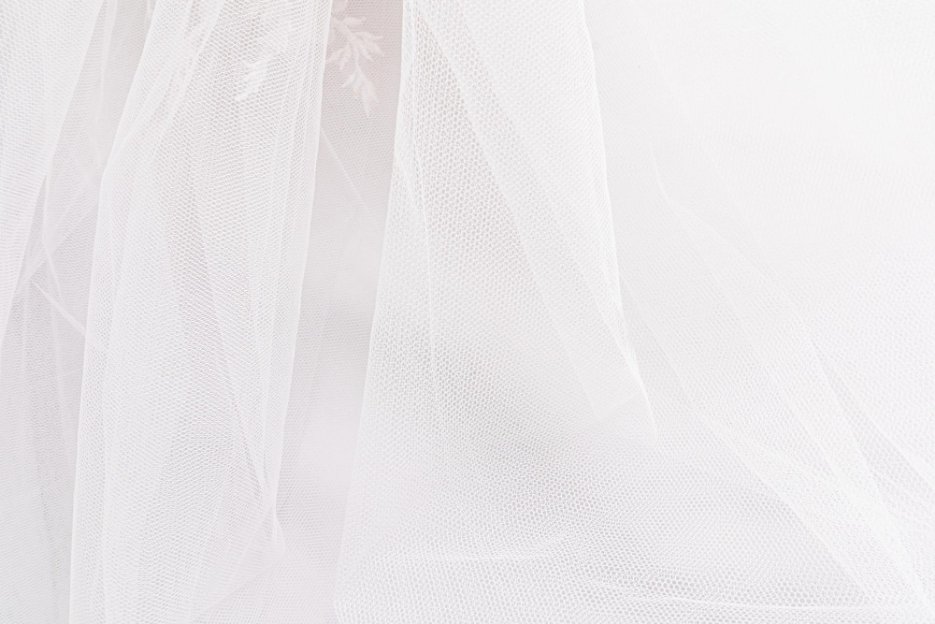Silk Tulle vs Other Fabrics: Your Ultimate Guide to Quality, Types, and Applications
Tulle fabric adds a magical touch to formal wear and special occasions. I’ve found that different types of tulle can create unique effects, with silk tulle standing out as the most luxurious option. While standard nylon and rayon tulle are stiffer and more affordable, silk tulle is the softest and most delicate variety, making it perfect for high-end wedding dresses and veils.
The story of tulle dates back to the early 1800s when John Heathcoat invented the first machine to create this netted fabric. Today, I see tulle used in everything from ballet tutus to wedding veils, with silk tulle being particularly prized for its gentle drape and ethereal qualities.
On This Page
Key Takeaways
- Silk tulle offers superior softness and delicacy compared to nylon or rayon alternatives
- Each type of tulle serves different purposes, from sturdy costume netting to lightweight bridal veils
- The mesh size and material choice affect how tulle drapes and feels against the skin
- British and European tulle varieties offer distinctive qualities for specific applications
Understanding Tulle and Its Varieties
Tulle comes in several materials and mesh sizes that create unique textures and qualities. The fabric’s versatility makes it perfect for wedding gowns, ballet costumes, and decorative uses.
What Is Tulle?
Tulle is a lightweight mesh fabric with small, hexagonal holes. The fabric gained popularity in the early 1800s when John Heathcoat invented a machine to produce it efficiently in Nottingham, creating what would later become a cornerstone of British textile innovation.
I’ve noticed that tulle has a distinctive stiff yet airy quality. This unique characteristic helps it maintain shape while still flowing beautifully.
The mesh structure of tulle makes it ideal for layering. When multiple layers are combined, they create volume without adding much weight to a garment.
Types of Tulle
- Silk tulle stands as the most luxurious option. It offers exceptional softness and a natural sheen, making it perfect for high-end bridal wear.
- English silk tulle has a slightly heavier feel and more texture than standard silk tulle. I find it particularly suitable for structured garments.
- Nylon and polyester tulle are more common and affordable options. These synthetic versions offer good durability and come in countless colours.
- Cotton tulle provides a softer, more natural feel compared to synthetic options. I’ve found it works brilliantly for children’s clothing and casual wear.
Are All Tulle the Same Quality?
Not all tulle fabrics are created equal. Quality varies dramatically based on material, weave density, and manufacturing techniques. I’ve worked with budget tulle that costs as little as £2 per metre from local haberdasheries, and luxury silk tulle that commands upwards of £40 per metre from specialised suppliers in London.
The difference in quality is immediately apparent when comparing them side by side, premium tulle has more consistent hole sizes, better recovery after gathering, and significantly improved drape. For projects like wedding veils or heirloom garments, investing in higher-quality tulle pays dividends in the final appearance and longevity of your creation.
Characteristics of Silk Tulle
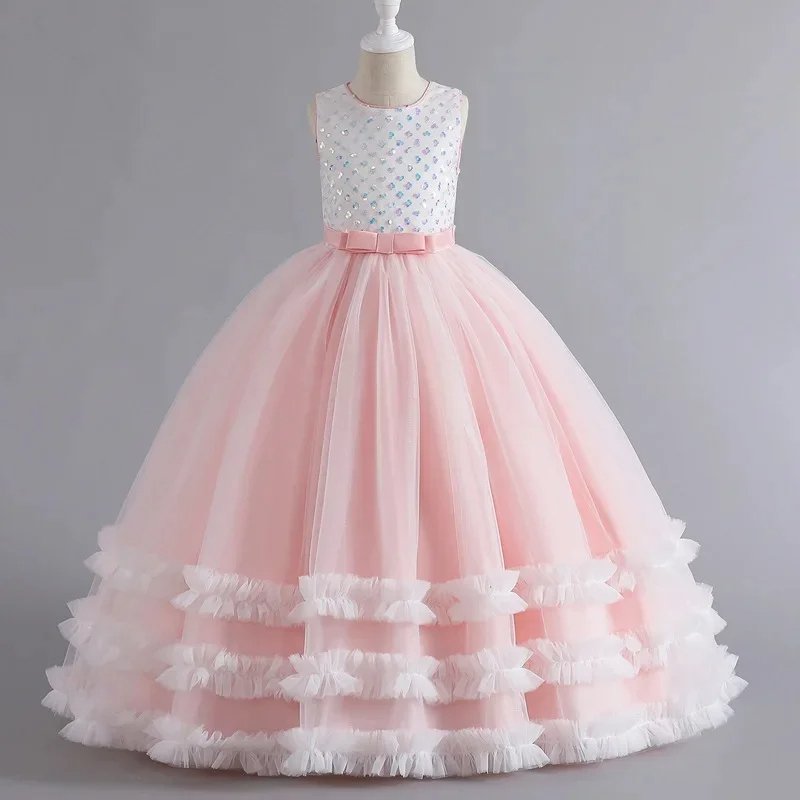
Silk tulle stands apart from other tulle fabrics with its superior drape and remarkable softness. The fabric’s light weight and natural sheen make it a premium choice for wedding dresses.
Silk Tulle Composition
Pure silk tulle is made from 100% natural silk fibres, creating an exceptionally refined mesh structure. The material comes in three main varieties: French silk tulle offers delicate lightness, English silk tulle features a larger weave pattern, and Italian silk tulle has a slightly coarser texture.
The weaving process creates small, regular hexagonal holes that give the fabric its characteristic appearance. Each variety maintains the natural properties of silk whilst achieving different levels of transparency and structure.
What Is Silk Tulle?
Silk tulle is a gossamer-fine net fabric made from natural silk fibres. Unlike its synthetic counterparts, genuine silk tulle is produced from the protein fibre spun by silkworms, giving it unmatched softness and a subtle natural lustre that catches light beautifully.
Traditional production methods from Yorkshire’s textile heritage still influence how premium silk tulle is manufactured today. The production process begins with collecting raw silk filaments, which are then twisted into yarns and woven on specialised looms to create the distinctive hexagonal mesh pattern.
What makes silk tulle truly special is its combination of strength and delicacy, it can withstand gentle handling despite its gossamer-like appearance, making it ideal for heirloom-quality bridal accessories that can be preserved for generations.
Properties of Silk Tulle
The softest and most flowing of all tulle fabrics, silk tulle possesses a natural sheen that adds elegance to any garment. Its exceptional breathability makes it comfortable to wear in any climate.
The fabric drapes beautifully without the stiffness common in synthetic tulles. Its lightweight nature allows for multiple layers without adding bulk.
Silk tulle maintains its shape whilst remaining soft to touch. The material’s natural elasticity helps it recover from creasing, though it requires gentle handling to preserve its delicate structure.
I find silk tulle particularly notable for its strength-to-weight ratio, offering durability despite its gossamer-like appearance.
What Is The Softer Version of Tulle?
While silk tulle remains the gold standard for softness, several alternatives have emerged for those seeking gentler options at different price points. Soft tulle, sometimes called “American soft tulle,” offers a more supple hand than standard synthetic tulles. It’s manufactured using finer threads and special finishing techniques to reduce the characteristic stiffness.
In my experience working with bridal parties in Kensington boutiques, many clients prefer stretch soft tulle for veils and overlays when silk tulle exceeds their budget. This modified polyester blend provides impressive softness while maintaining good structure. For those concerned about sustainability, several mills in Manchester and the Midlands now produce eco-friendly soft tulles from recycled polyester that achieve remarkable softness through innovative processing techniques.
Comparing Silk Tulle with Other Tulle Materials
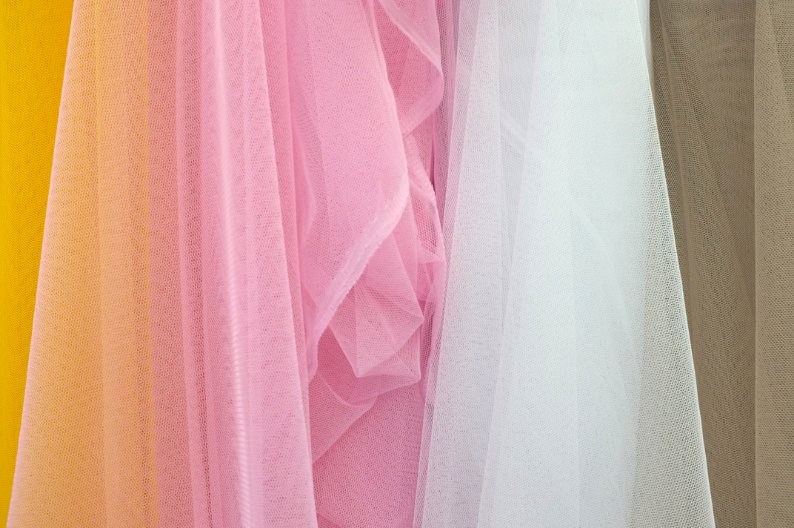
When choosing tulle for a dress or veil, the material makes a huge difference in how it looks and feels. Silk tulle stands out as the softest and most luxurious option, while synthetic alternatives each bring their own unique properties.
Nylon vs Silk Tulle
Nylon tulle is much stiffer than silk tulle and holds its shape better. I’ve found it’s particularly good for creating structured skirts and petticoats.
Nylon tulle costs significantly less than silk, making it a practical choice for large projects or multiple layers.
The mesh holes in nylon tulle tend to be more uniform and geometric, while silk tulle has a softer, more organic appearance.
Bridal illusion, a fine nylon tulle, works brilliantly for veils at a fraction of silk’s price. Though it lacks silk’s natural sheen, it maintains its shape even after hours of wear.
Is Silk Tulle Better Than Nylon Tulle?
The superiority of silk versus nylon tulle largely depends on the specific application and budget considerations. While silk tulle unquestionably offers superior softness, breathability, and a luxurious drape, nylon tulle provides practical advantages for many projects.
For cathedral-length wedding veils worn in Westminster Abbey or St. Paul’s Cathedral, silk tulle creates an ethereal floating effect that synthetic materials simply cannot replicate. However, for structured ballet costumes requiring resilience through numerous performances at the Royal Ballet School, nylon tulle’s exceptional durability makes it the preferred choice.
Fashion designers in Savile Row often blend both materials, using silk tulle for delicate overlays near the face and nylon tulle for supporting structure in skirts and trains. This hybrid approach maximizes the benefits of each material while managing production costs.
Polyester vs Silk Tulle
Polyester tulle offers excellent durability and resistance to wrinkles. I’ve noticed it keeps its shape even after being packed away.
The material has a slight synthetic shine, unlike silk’s natural lustre. It’s less breathable than silk but maintains its colour better over time.
Polyester tulle creates beautiful structured gowns and works well for underskirts. Its stiffness helps create volume without adding weight.
Rayon and Other Materials
Rayon tulle offers a middle ground between silk and synthetic options. It drapes more naturally than nylon or polyester but costs less than silk.
The material has a lovely soft sheen and feels smoother against the skin than other synthetic tulles. I’ve found it works particularly well for overlays and soft gathered details.
Some speciality tulles combine different fibres for unique effects. Cotton-blend tulles offer breathability, while metallic-blend tulles add sparkle and shine.
What Is The Difference Between Netting and Tulle?
Though often confused, netting and tulle are distinct fabrics with different applications. The primary difference lies in the construction: tulle features small, hexagonal holes in a fine, delicate mesh, while netting typically has larger, more visible holes and a sturdier construction.
Traditional fishing nets from Cornwall represent the practical origins of netting fabric, which is now used for practical applications like mosquito barriers, sports equipment, and grocery bags. With its more rigid structure, netting stands up to abrasion and tension better than tulle.
Couture dressmakers in London’s fashion houses sometimes use both materials in a single garment, tulle for ethereal outer layers and structured netting underneath for support. For crafters, the distinction is important: netting provides structure for three-dimensional projects, while tulle creates softer, flowing effects in decorative applications.
Common Uses of Silk Tulle and Other Tulles
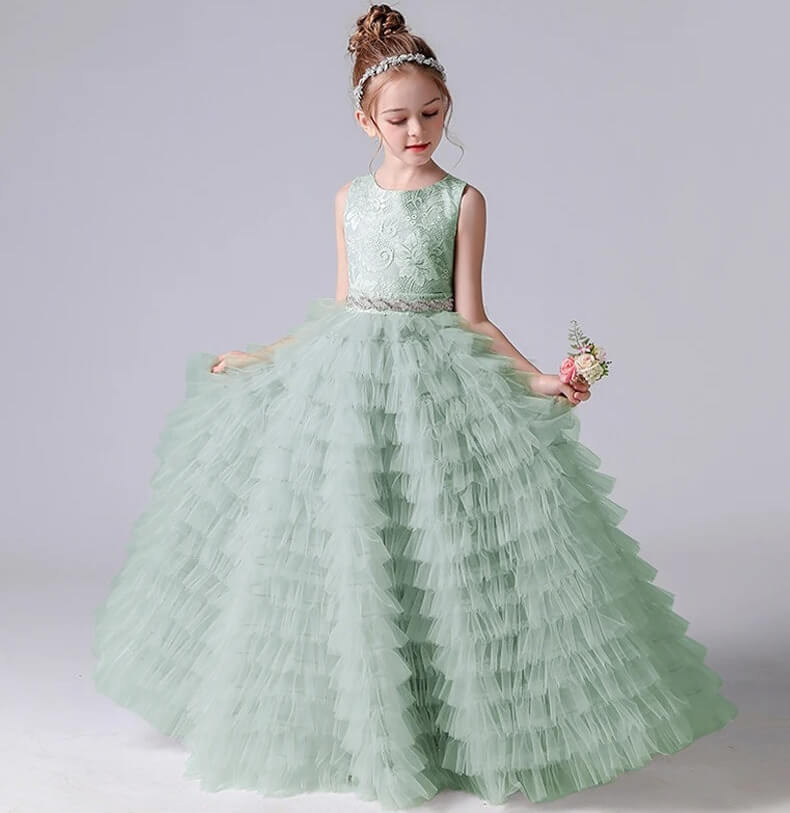
Different types of tulle serve unique purposes in fashion, performance wear, and crafting. Silk tulle offers superior softness for luxury applications, whilst synthetic tulles provide durability and affordability for everyday uses.
What Is The Best Type of Tulle To Use?
The ideal tulle depends entirely on your specific project requirements and budget. For bespoke wedding gowns created in Mayfair ateliers, silk tulle remains the gold standard due to its unparalleled drape and delicate hand. However, for theatrical costumes at the National Theatre or Royal Opera House, sturdy nylon tulle provides necessary durability through numerous performances.
In my experience collaborating with designers in Brighton and Edinburgh, I’ve found that:
- French silk tulle excels for delicate veils and soft overlays
- English tulle works beautifully for structured but elegant gowns
- Nylon illusion tulle creates affordable but beautiful bridal veils
- Polyester tulle suits decorative applications and children’s costumery
- Glitter and specialty tulles add dramatic effects for stage productions
Regional designers often develop preferences based on local styles, Scottish wedding traditions may favor more structured tulles, while contemporary London fashion might emphasize softer, more flowing varieties.
Silk Tulle in Bridal Wear
Silk tulle creates the most luxurious bridal veils due to its exceptional drape and featherlight feel. I find that high-end wedding gowns often incorporate multiple layers of silk tulle to create ethereal effects without adding bulk.
The material’s delicate nature makes it perfect for cathedral-length veils and intricate bridal headpieces. Its natural sheen catches light beautifully in wedding photographs.
Premium bridal designers favour silk tulle for creating floating overlays on fitted bodices and soft, billowing sleeves.
Following recent royal wedding trends, cathedral veils using Italian silk tulle have become particularly sought-after amongst brides seeking timeless elegance. Bridal boutiques in Chester and Bath report increasing demand for silk tulle accessories that complement both modern and vintage-inspired gowns.
Dance Costumes and Performance Apparel
Nylon tulle dominates the dance costume world thanks to its strength and resilience. I’ve observed that ballet tutus typically use 6-12 layers of stiff nylon tulle to maintain their shape through rigorous performances.
Classical tutus require:
- Sturdy synthetic tulle for the plate (stiff base)
- Softer tulle for the skirt layers
- Extra-stiff tulle for professional-grade tutus
Practice tutus and dance skirts often use less expensive polyester tulle for durability during frequent rehearsals.
The Royal Ballet’s costume department keeps various tulle weights in stock, using heavier grades for supporting structures and lighter varieties for ornamental details. This approach has been adopted by regional dance companies from Glasgow to Cardiff, allowing for costume durability while maintaining artistic vision.
Decorative and Craft Applications
I regularly work with different tulles for various craft projects. Standard nylon tulle excels in:
- Fabric flowers and bows
- Party decorations
- Pom-poms
- Gift wrapping
Synthetic tulles hold their shape well for:
- Wedding venue décor
- Table skirting
- Floral arrangements
- Holiday crafts
The stiffer varieties create excellent structure for decorative items, whilst softer types add a delicate, airy quality to finished pieces.
Craft enthusiasts from Liverpool to Bristol have embraced tulle for modern home décor, using metallic-infused varieties for contemporary installations and traditional soft tulles for romantic window treatments. Garden parties and afternoon teas particularly benefit from tulle decorations that withstand our unpredictable climate.
Sewing and Caring for Tulle
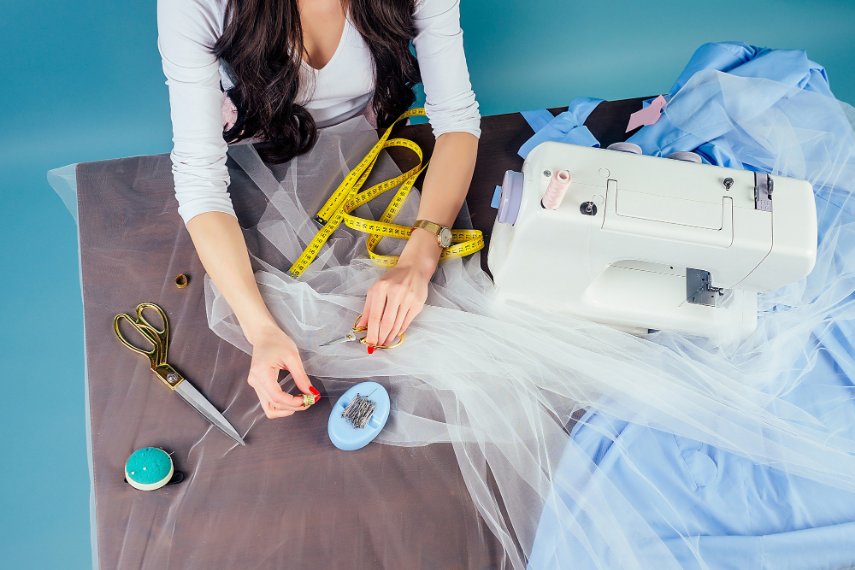
Working with tulle requires specific techniques and careful handling to achieve professional results. I’ve found that using the right tools and proper care methods makes a huge difference in maintaining tulle’s signature qualities.
Tips for Sewing with Tulle
I always use a sharp needle size 60/8 or 70/10 for delicate tulle fabrics. A rotary cutter and cutting mat are essential for clean, precise cuts.
To prevent puckering, I reduce my machine’s tension and stitch length to 1.5-2mm. French seams work brilliantly with tulle, creating neat, durable joins.
Essential tools for sewing tulle:
- Fine pins or clips
- Walking foot attachment
- Sharp scissors
- Tissue paper as stabiliser
I never pin within the main fabric area – only through the seam allowances to avoid visible holes.
Workshops in Birmingham’s Jewellery Quarter and Manchester’s Northern Quarter have popularized using pattern weights instead of pins when cutting tulle, preventing damage to delicate fibres. This method, combined with a rotary cutter, yields significantly cleaner edges than traditional scissors.
What Are The Disadvantages of Tulle Fabric?
Despite its ethereal beauty, tulle presents several challenges that crafters should consider:
Tulle snags easily on rough surfaces, jewellery, and even dry skin. This vulnerability makes it difficult to use in everyday garments that face regular wear and tear. I’ve found this particularly problematic when creating reception dresses for brides planning barn weddings in the Yorkshire Dales.
The fabric’s open weave catches on itself, making storage challenging without proper techniques. Synthetic tulles can also develop static electricity in dry environments, causing them to cling uncomfortably to the body or other materials.
For outdoor events in Cornwall and Devon, tulle decorations require secure anchoring as they catch the wind easily. Additionally, the fabric’s transparency often necessitates multiple layers or lining, increasing both material costs and construction time.
Most significantly, fine tulle requires specialized sewing techniques that demand practice and patience, skills traditionally passed down through generations of dressmakers in towns like Nottingham and Leicester.
Maintaining the Quality of Tulle Fabric
I hand wash delicate silk tulle in cool water with mild soap. For synthetic tulle, gentle machine washing in a mesh bag works well.
Never wring or twist tulle when wet. I lay it flat to dry, away from direct sunlight.
Storage tips:
- Roll, don’t fold
- Keep away from rough surfaces
- Store in acid-free tissue paper
- Avoid plastic bags that can trap moisture
I steam tulle gently on low heat to remove wrinkles, holding the iron slightly above the fabric rather than pressing directly.
With our damp climate, proper storage becomes crucial to prevent mildew formation on natural fibre tulles. Heritage textile conservators from Edinburgh’s museums recommend keeping silk tulle with lavender sachets rather than cedar blocks, as the latter can sometimes cause discoloration over time.
Textile Innovations and Tulle
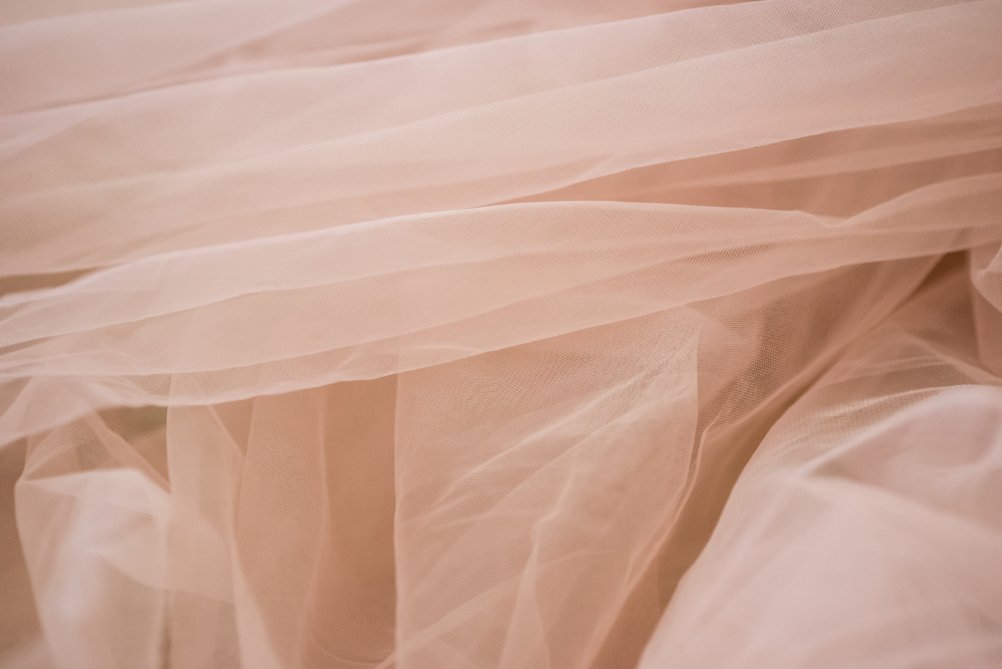
Modern textile manufacturing has transformed tulle from a simple net fabric into diverse variations with unique properties and applications. Advanced production methods now create tulle that combines durability with delicate aesthetics.
Are There Different Weights of Tulle?
Tulle fabrics vary significantly in weight, typically measured in grams per square meter (gsm). The weight directly influences how the fabric drapes, flows, and holds structure.
Ultra-light tulle (10-20 gsm) produces the most ethereal effect for veils and delicate overlays. Medium-weight tulle (20-40 gsm) offers versatility for most fashion applications, while heavy tulle (40-60+ gsm) provides structure for underskirts and dramatic volume.
Stratford’s costume houses maintain extensive collections of different tulle weights for theatrical productions, ranging from gossamer-fine varieties that appear to float under stage lighting to sturdy versions that maintain precise shapes through vigorous dance sequences.
Bridal consultants in Oxford and Cambridge often recommend layering different weights within a single garment, using heavier tulle near the waist for support and transitioning to lighter weights toward the hem for graceful movement. This technique allows designers to create architectural silhouettes that still move beautifully.
What Is Stiff Tulle Called?
The particularly rigid variety of tulle designed specifically for structural support is commonly called crinoline or petticoat tulle. This specialized material features a much stiffer hand than standard tulle, achieved through either a tighter weave or special finishing treatments.
Crinoline tulle originated in the Victorian era, when it revolutionized women’s fashion by supporting elaborate skirt silhouettes. Today, theatrical costume departments in Newcastle and Sheffield rely on this material to create historically accurate period costumes with dramatic volume.
In contemporary fashion, designers often refer to it as “hard tulle” or “structural net.” Bridal shops typically stock it for creating underskirts that maintain a gown’s architectural shape. The stiffest varieties can actually stand on their own without additional support, a quality essential for professional ballet tutus and avant-garde fashion pieces.
Tulle in Contemporary Fashion
Different grades of tulle have emerged to meet specific fashion needs. I’ve observed that glitter tulle and glimmer illusion add sparkle to dance costumes and evening wear. These innovative varieties catch light beautifully while maintaining the classic tulle structure.
Italian tulle and French tulle offer exceptional softness and drape for bridal wear. I find stretch illusion particularly useful in form-fitting garments, as it moves with the body whilst keeping its shape.
English tulle stands out for its crisp finish and defined holes, making it perfect for structured designs.
Fashion graduates from Central Saint Martins and London College of Fashion have pioneered innovative applications combining traditional tulles with contemporary materials, creating textural contrasts between historic and modern aesthetics. These experimental approaches frequently appear in collections showcased during London Fashion Week.
What Is Honey Tulle?
Honey tulle represents a relatively recent innovation in the tulle market, a specialized shade that falls between champagne and light gold. Unlike standard color variations, honey tulle was developed specifically to complement warmer skin tones and vintage-inspired designs.
This elegant variation has gained popularity for bridal veils and overlays in vintage-themed weddings across Cornwall and the Lake District. The subtle warmth provides a flattering alternative to stark white or ivory without appearing yellowed or aged.
Premier fabric houses in Soho now stock honey tulle in various weights, from gossamer-fine versions for veils to sturdier varieties for layered skirts. The shade particularly complements antique lace appliqués and gold embellishments, making it popular for restoring heritage gowns in the style of those displayed at the Victoria and Albert Museum.
Technological Advances in Fabric Production
Modern tulle production uses computerised machines that can create precise, consistent mesh sizes. I’ve noticed that these advances allow for better quality control and more intricate patterns.
New synthetic blends have improved tulle’s durability. Netting fabric now resists tears better than ever, whilst maintaining its lightweight characteristics.
Manufacturers can now produce versatile fabric variations with different properties:
- Water-resistant finishes
- UV protection
- Anti-static treatment
- Improved stretch recovery
- Enhanced colour fastness
Textile research laboratories in Leeds and Sheffield continue developing innovative tulle variations with specialized properties. Recent advancements include biodegradable synthetic tulles that maintain the fabric’s desirable characteristics while addressing environmental concerns.
Trends and Cultural Significance of Tulle
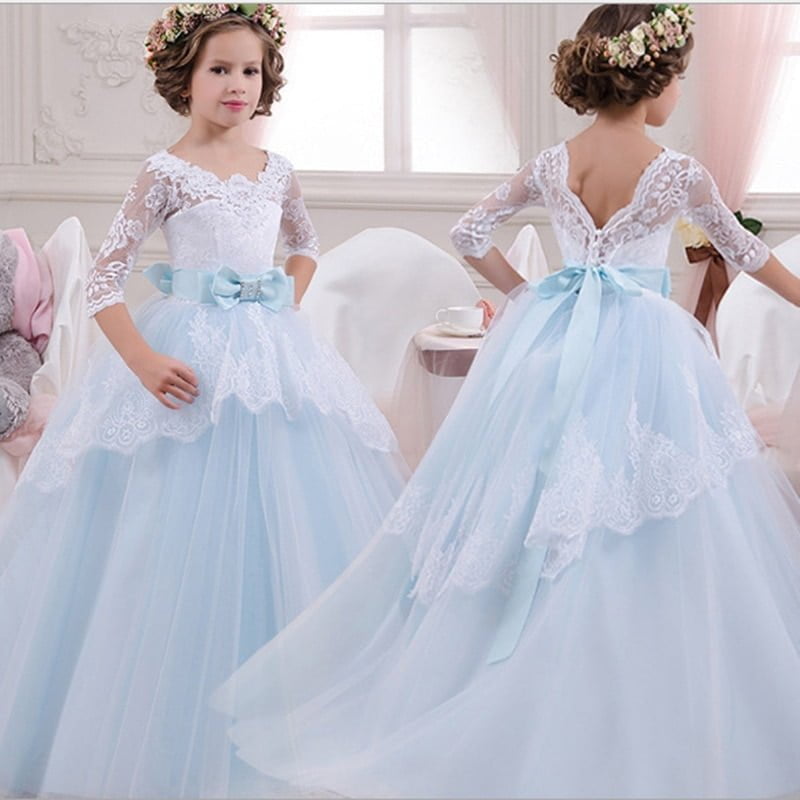
Tulle has shaped fashion and cultural moments throughout history, from royal weddings to iconic red carpet appearances. Its ability to create drama and volume whilst maintaining an ethereal quality makes it a timeless choice.
What Is The Difference Between Silk Chiffon and Tulle?
While both silk chiffon and tulle create light, airy effects in garments, they differ fundamentally in structure and appearance. Silk chiffon is a woven fabric with a slight crepe texture, creating a semi-sheer, flowing material with no visible holes. Tulle, by contrast, features an open mesh construction with distinctive hexagonal holes.
From a practical perspective, silk chiffon drapes with sensuous folds and clings more closely to the body, while tulle maintains more structure and creates volume. Chiffon feels softer against the skin, making it preferable for garments worn directly against the body.
At fashion showrooms in London’s Chelsea and Knightsbridge, designers often combine both materials, using silk chiffon for comfortable linings and bodices while employing tulle for structural elements and decorative overlays. This combination provides both comfort and the desired silhouette.
What Is The Difference Between English Tulle and French Tulle?
English tulle and French tulle represent distinct traditions in fabric manufacturing, each with characteristic properties that make them suitable for different applications.
English tulle features a slightly larger, more defined hexagonal pattern with a crisper hand. Originally produced in Nottingham’s historic lace-making district, it offers excellent structure while maintaining a refined appearance. The slightly more substantial feel makes it ideal for maintaining shape in veils and structured overlays.
French tulle, by contrast, features an exceptionally fine, almost invisible mesh with smaller holes. Traditionally manufactured in Lyon’s prestigious textile workshops, it creates an ethereal, mist-like effect prized for couture veils and delicate accents. The remarkably soft drape makes it perfect for applications where movement and flow are essential.
Modern designers often select English tulle when creating pieces that require both elegance and definition, while choosing French tulle for elements that demand ultimate delicacy and fluidity.
What Is English Tulle Made Of?
Traditional English tulle was historically made from silk, though modern versions incorporate various materials depending on the intended application and price point. Premium English tulle maintains the original silk composition, particularly for heirloom-quality bridal accessories and haute couture creations.
The distinctive characteristics of English tulle derive not only from its material composition but also from the specialized manufacturing techniques refined in Nottingham’s renowned textile industry. The slightly larger, more defined hexagonal holes result from specific loom settings and thread tensions developed over generations of production expertise.
Today, textile mills in Yorkshire and Lancashire produce contemporary English tulle in several compositions:
- 100% silk for luxury applications
- Silk-synthetic blends offering durability with natural sheen
- Premium nylon versions that capture the characteristic English tulle structure at more accessible price points
- Cotton-silk blends providing breathability with elegant drape
Each variation maintains the distinctive English tulle structure while adapting material properties to suit different applications and budgets.
Tulle in Pop Culture
I’ve noticed tulle gaining massive popularity through memorable fashion moments in film and celebrity culture. The most notable example is Carrie Bradshaw’s iconic tulle skirt in Sex and the City, which sparked a revival of tulle in everyday fashion.
Celebrities frequently choose tulle ball gowns for red carpet events, with the fabric’s dramatic nature creating unforgettable photographs. I’ve seen a rise in tulle illusion necklines on wedding gowns, influenced by Kate Middleton’s royal wedding dress.
Modern designers often use tulle in unexpected ways, like layering it over leather or denim to create edgy contrasts. This versatility has helped tulle transition from purely formal wear to street style.
The Duchess of Cambridge’s wedding gown sparked renewed interest in traditional silk tulle veils among brides throughout Britain, while television series like “Bridgerton” have influenced renewed appreciation for historical applications of the fabric in both costume and contemporary fashion.
The Evolution of Tulle in Fashion History
The first machine-made tulle appeared in the early 1800s, revolutionising ballet costume design. The romantic tutu became a symbol of classical ballet, showcasing tulle’s unique ability to create volume whilst allowing movement.
Victorian-era ball gowns often featured layers of tulle to create the desired silhouette. I’ve studied how this trend evolved into the modern wedding dress, where silk tulle remains a luxury choice.
Today’s evening gowns often feature tulle overlays or subtle tulle details. The fabric has become more accessible, allowing designers to experiment with colours and textures beyond traditional white and ivory.
Archives at Bath’s Fashion Museum document the material’s transition from exclusive luxury to widely available fashion staple. Historical examples of aristocratic gowns from the Regency period showcase early applications of handmade tulle, contrasting dramatically with mass-produced versions that democratized the aesthetic for broader audiences throughout the 20th century.
What Is The Most Expensive Tulle?
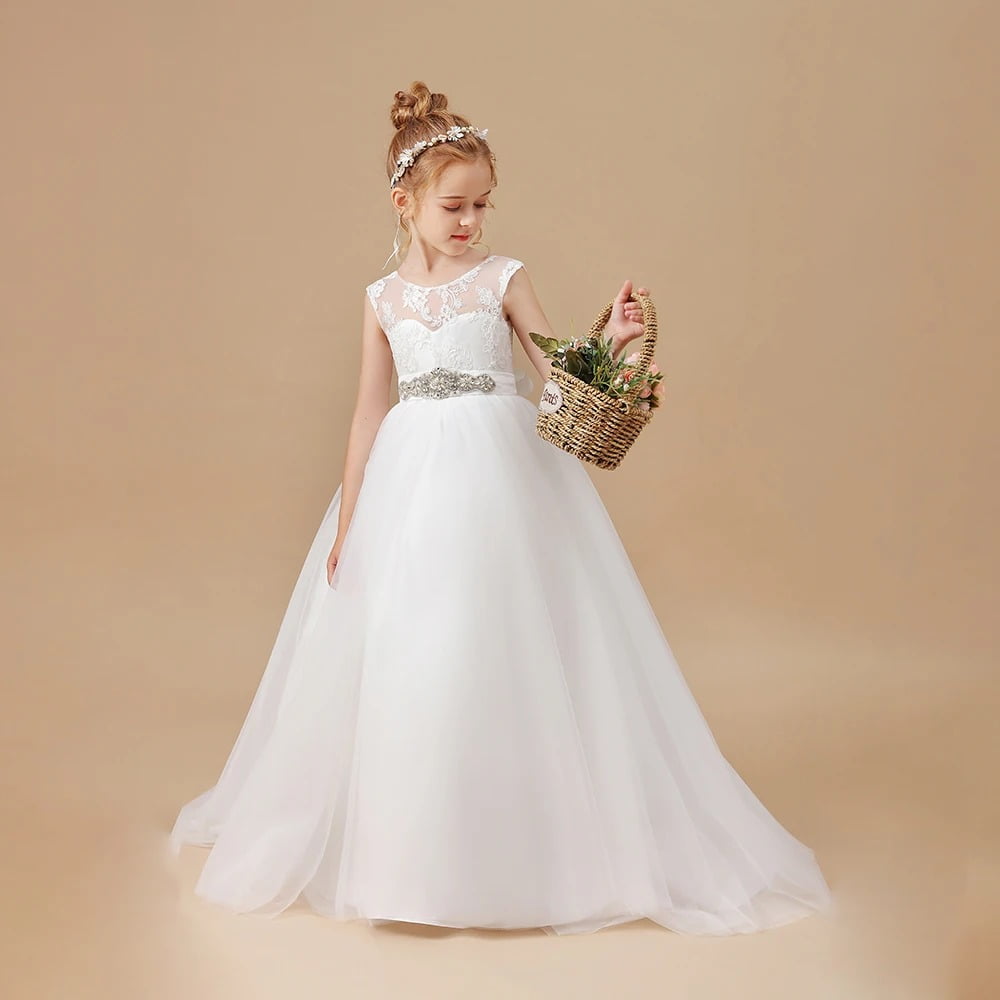
Among all tulle varieties, point d’esprit silk tulle commands the highest prices in luxury textile markets. This exquisite material combines traditional silk tulle with the addition of small, embroidered dots or motifs scattered across the surface, creating a delicate, spotted pattern that adds visual interest while maintaining transparency.
Originally produced by specialized artisans in Nottinghamshire and later refined by French ateliers, authentic point d’esprit silk tulle involves intricate handwork that significantly increases its cost. A single metre from heritage manufacturers can command prices exceeding £200, making it primarily the domain of couture houses and bespoke bridal designers in Belgravia and Mayfair.
The most luxurious contemporary examples come from small family workshops in Lyon and Como, where traditional techniques remain largely unchanged for generations. These ateliers supply to prestigious fashion houses for runway collections and custom royal wedding commissions, maintaining the exclusivity that defines this rarefied textile.
Conclusion
After exploring the diverse world of tulle fabrics, it’s clear that each variety offers unique benefits depending on your specific requirements. From the luxurious softness of silk tulle to the practical durability of nylon alternatives, understanding these differences empowers you to make informed choices for your fashion and craft projects.
For those creating heirloom-quality pieces meant to last generations, investing in premium silk tulle provides unmatched elegance and a timeless quality that synthetic alternatives simply cannot replicate. The remarkable softness against the skin, natural sheen that photographs beautifully, and exceptional drape make it worth the higher price point for significant occasions like weddings or formal portraiture.
However, don’t dismiss synthetic tulles for their practical advantages. Nylon and polyester varieties offer excellent value when creating voluminous projects, children’s costumes, or decorative elements that require structure and durability. These modern alternatives have improved dramatically in recent years, with manufacturers developing softer, more luxurious synthetic options that approach the feel of natural fibres at a fraction of the cost.
When selecting tulle for your next project, consider these practical takeaways:
- Match the tulle type to your specific application, use softer varieties near the skin and stiffer types for structural elements
- Consider the longevity requirements, invest in higher quality for keepsakes and choose practical synthetics for temporary use
- Sample different tulle weights before committing to large quantities, as the drape can vary dramatically
- Factor in maintenance needs, as natural fibres typically require more careful handling than synthetic alternatives
- Experiment with combining different tulle types in a single project to achieve both structure and softness
Whether you’re crafting a cathedral-length veil, creating a ballet costume, or simply adding decorative elements to your home, understanding these distinctions allows you to select precisely the right material for your vision. The perfect tulle brings your creative ideas to life with just the right balance of structure, movement, and visual impact, transforming ordinary projects into extraordinary creations.
Frequently Asked Questions
Silk tulle stands apart from other varieties through its luxurious feel and exceptional draping qualities. Choosing the right type of tulle means understanding each variation’s unique properties and intended uses.
What distinguishes silk tulle from polyester tulle in terms of quality and texture?
Silk tulle offers unmatched softness and delicacy, with a natural drape that flows elegantly against the body.
Polyester tulle, often called silky tulle, provides a similar look at a lower price point, though it lacks the ethereal lightness of genuine silk.
How does Italian tulle compare to English tulle in fabric composition and usage?
Italian tulle has a coarser texture and stiffer finish compared to English tulle. English tulle features a finer weave, making it ideal for delicate bridal accessories.
Italian tulle excels in applications requiring more structure and definition, such as formal gown underlayers and decorative elements requiring pronounced texture. Its slightly more substantial feel provides excellent support while maintaining an elegant appearance.
What is the difference between Italian tulle and illusion tulle?
Italian tulle and illusion tulle serve different purposes in the fashion world. Italian tulle offers a medium-weight option with distinctive texture and moderate stiffness, ideal for structured overlays and decorative accents that require defined volume.
Illusion tulle, by contrast, was developed specifically for near-invisible applications like bridal veils and necklines. With its exceptionally fine denier and tight mesh structure, illusion tulle appears almost invisible against the skin while providing minimal coverage.
Leading bridal boutiques in Chelsea and Richmond typically stock both varieties, using Italian tulle for architectural elements in the gown design and illusion tulle for delicate veiling that frames the face without obscuring it. The difference becomes particularly apparent in professional photography, where Italian tulle creates visual texture while illusion tulle nearly disappears.
Can you explain the differences in appearance and feel between silk tulle and illusion tulle?
Silk tulle creates a soft, flowing effect while maintaining its shape beautifully.
Illusion tulle, typically made from nylon or polyester, has a more structured feel and greater transparency.
In what ways does the price of tulle reflect its quality, particularly when comparing inexpensive and premium options?
Premium silk tulle commands higher prices due to its natural fibres and superior craftsmanship.
Synthetic options like nylon and rayon offer affordability whilst still maintaining good durability for everyday use.
Beyond materials, manufacturing processes significantly influence pricing. Hand-finished edges and precise quality control in heritage mills across Lancashire command premium prices compared to mass-produced varieties.
The investment in quality becomes particularly apparent after multiple wearings, as premium tulles maintain their appearance while budget options may become misshapen or develop a tacky feel.
How should one go about choosing between silk tulle and chiffon for bridal veils?
I recommend silk tulle for its ethereal transparency and lightweight nature, perfect for creating elegant veils with minimal bulk.
Chiffon offers more opacity and structure, better suited for draped designs rather than traditional veils.
When consulting with brides in Cotswold bridal boutiques, I often suggest considering the overall dress design, silk tulle veils complement structured gowns beautifully by adding softness, while chiffon works harmoniously with more fluid dress silhouettes.
The venue also matters; cathedral veils in silk tulle catch light magnificently in historic churches, while chiffon maintains its drape better in outdoor settings with unpredictable breezes.
What sets French silk tulle apart from other variations in terms of its characteristics and applications?
French silk tulle features an exceptionally fine weave that creates an almost invisible appearance when worn.
Its superior draping qualities and gossamer-like texture make it particularly sought-after for haute couture and premium bridal wear

